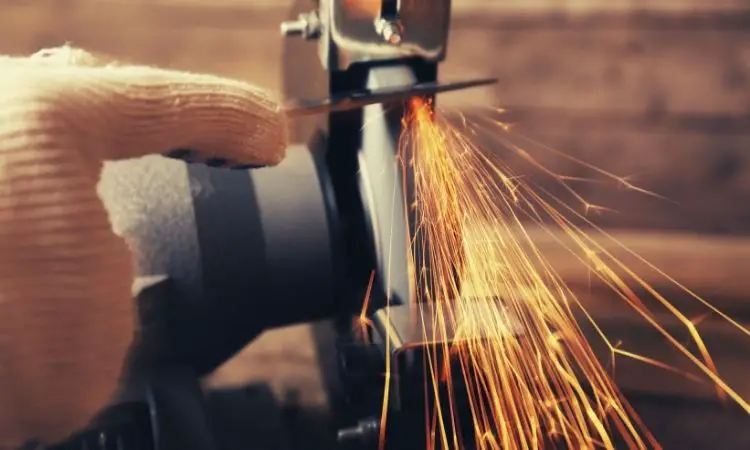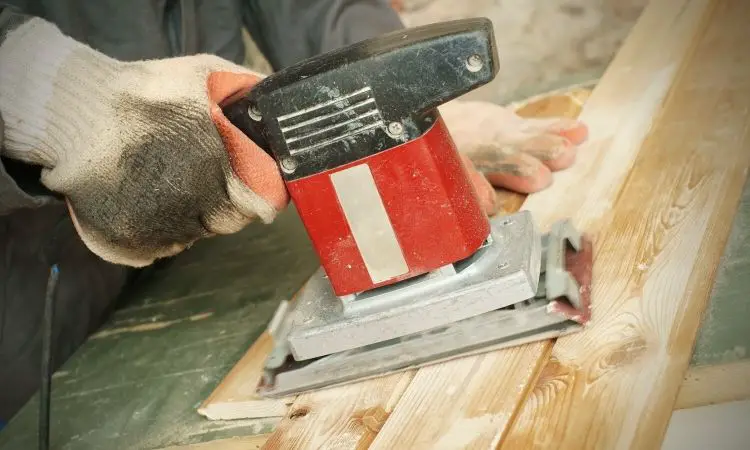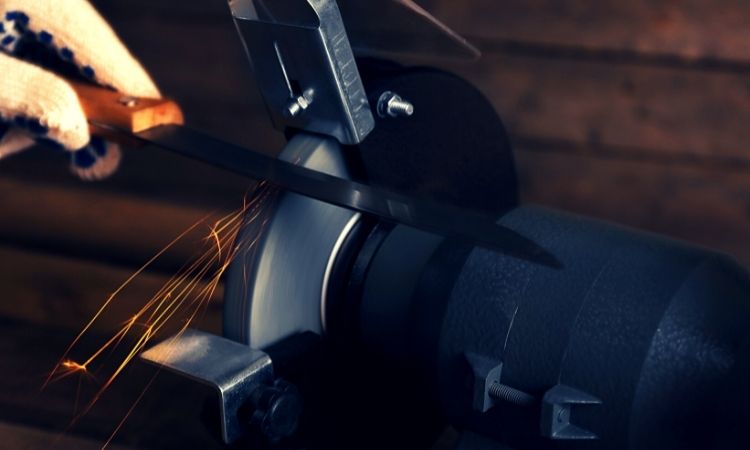If you're looking to sharpen your knives using a belt sharpener, it's important to use the correct grit belt. In this blog post, we will discuss everything you need to know about grit belts for knife sharpening. We'll talk about what the different grits are used for, and we'll give you some tips on how to choose the right belt for your needs.
So, What grit belt to use for knife sharpening?
The answer to this question depends on the type of knife you are sharpening, and your personal preferences. For most people, we recommend using a belt with a grit between 120 and 400. If you're looking for a finer edge, you can use a belt with a higher grit. And if you're looking for a more aggressive sharpening, you can use a belt with a lower grit.
There are many different brands and types of belts available, so it's important to do your research before you buy to get an idea of what other people are using and how they like it.
Once you've decided on the right grit for your needs, it's time to start sharpening. Be sure to follow the instructions that come with your belt sharpener, and always be careful when working with knives.
What Type of Belt Grinder Grit Is Available in the Market?
The market is full of various types and brands of belt grinders. The most common grits used in knife making are 36, 60, 80, 120, 220, 400, 600, 800, 1200 and 3000.
The lower the number the coarser the abrasive material is. In general terms a 60 grit will remove metal faster than an 80 grit but both will leave a rougher finish. A 36 grit is very aggressive and can quickly damage your tools if not used carefully.
The higher the number the finer the abrasive material is. In general terms, a 1200 grit will remove metal slower than an 800 grit but both will leave a much smoother and finished surface.
A 3000 grit is considered to be polishing grade and will leave a very fine surface finish.
What Are The Materials For Belt Grinder Grit?
The most common type of belt grinder grit is made from aluminum oxide. This is a very tough and durable material that can withstand high temperatures and heavy use. Other types of materials include zirconia, silicon carbide, ceramic, and diamond. These materials are typically used for specific applications or for people who have special needs.
Aluminum Oxide.
This is the most common type of belt grinder grit. It's tough and durable, making it ideal for high-use applications. As it has several benefits to use as a knife sharpening and a wide range of measurements that's why it is the most used in knife making.
Zirconia.
This type of belt grinder grit is typically used for specific applications. It's a strong and durable material, but it can be more expensive than other options. But in many cases, this is the option as it offers a fast speed and consistent results.
Silicon Carbide.
This is another tough and durable material, but it's not as common as aluminum oxide. It can be more expensive than other options, but it's a good choice for people who need a high-quality finish.
Ceramic.
Though not as tough as some of the other materials on this list, ceramic is a good choice for people who need a fast sharpening speed. It's also a good choice for people who want a consistent finish.
Diamond.
This is the most expensive type of belt grinder grit, but it's also the most durable. Diamond is the top choice for people who need the highest quality finish and who don't mind paying a bit more for it.
What Grit Will perfect Suits for My Knife?
The answer to this question depends on the type of knife you are sharpening and your personal preferences. There are several knife grinder that may help you to do the task quickly. There are several types of knife are available on the market. Some are :
- Kershaw Knives
- Benchmade Knife
- Spyderco Knife
- Cold Steel Knife
- CRKT Knives
- Buck Knives
These knives can be easily found in any market or you can buy them from an online store. The knives listed above are just a few of the most popular brands on the market today. There are many other great brands out there, so be sure to do your research before you buy.
What Should You Look Before Buying a Grinding Grits?
There are so many important factors to consider before buying a grinding grit. But the most important factor is the type of knife you are going to use it.
You also need to think about what kind of finish you want, and how much money you're willing to spend. With so many options on the market, it's important to take your time and find the perfect grit for your needs.
Friability
When you're looking for the perfect grinding grit, one of the things you need to consider is friability. This is a measure of how quickly the abrasive material breaks down under use.
If you're looking for a fast sharpening speed, then you'll want to choose a grit with a low friability. However, if you're looking for a high-quality finish, then you'll want to choose a grit with a high friability.
Cost
Of course, cost is always an important factor to consider when you're making any purchase. Grinding grits range in price from around $30 to $100 or more.
It's important to find the perfect balance between quality and price when you're choosing your grit. You don't want to spend too much money on a grit that's not going to give you the results you're looking for.
Resistance to L
The grinding grit resistance to loading measure of how quickly the abrasive material breaks down under use.
If you're looking for a fast sharpening speed, then you'll want to choose a grit with a low resistance to loading. However, if you're looking for a high-quality finish, then you'll want to choose a grit with a high resistance to loading.
Operating Temperature
Generally, the higher the operating temperature of a grinding grit, the faster the sharpening speed. However, you also need to consider the maximum temperature that the abrasive material can withstand.
You don't want to choose a grit that's going to break down under use, so be sure to find one with a high operating temperature.
Size and Shape of Abrasive Particles.
When you're choosing a grinding grit, be sure to consider the size of the abrasive particles. The smaller the particle size, the finer the finish will be. However, if you're looking for a fast sharpening speed, then you'll want to choose a grit with larger particles.
Tips for Keeping Your Knives Sharp
Once you've found the perfect grinding grit, it's important to take care of your knives so they stay sharp. Here are a few tips:
- Use a honing rod or strop to keep your knives sharp between uses.
- Be sure to clean your knives after each use and dry them immediately.
- Store your knives in a safe place where they won't get nicked or damaged.
- Never put your knives in the dishwasher, as this can damage the blade.
With proper care and maintenance, your knives will stay sharp for years to come.
How to Tell if Your Knives Are Sharp Enough?
If you're not sure if your knives are sharp enough, there are a few simple tests you can do.
- First, try slicing through a piece of paper. If the knife cuts cleanly and effortlessly, then it's sharp enough.
- Another test is to try chopping a vegetable like an onion. If the knife slips or tears the onion, then it's not sharp enough.
- Finally, you can try shaving a piece of hair off your arm. If the knife pulls or tugs at the hair, then it needs to be sharper.
If you follow these tips, you'll be sure to find the perfect grit for your needs and keep your knives in top condition.
Conclusion:
Now that you know what to look for in a grinding grit, and how to take care of your knives, you're ready to choose the perfect one for your needs. Be sure to shop around and compare prices before you make your final decision. With so many great options on the market, you're sure to find the perfect grit for your needs. Thanks for reading! I hope this article was helpful. Happy sharpening!

I am a graduate of Bangladesh Agricultural University, where I delved into various agricultural disciplines, equipping me with a profound understanding of agriculture. Beyond academics, I have hands-on experience in gardening and crop cultivation. My passion is to embrace sustainable farming and horticulture. With a BSc in Agriculture, I am dedicated to promoting environmentally conscious and efficient agrarian practices.
Bachelor of Science (BSc) in Agriculture (Hons.)
Master of Science. (Sustainable Agriculture & Food Security ) (MS)
Bangladesh Agricultural University



![Best Knife Grinder for Beginners and Buyer Guide in 2022 [Top Pick] Best-Knife-Grinder-For-Beginners](https://broadpick.com/wp-content/uploads/2021/09/Best-Knife-Grinder-For-Beginners-1.jpg)